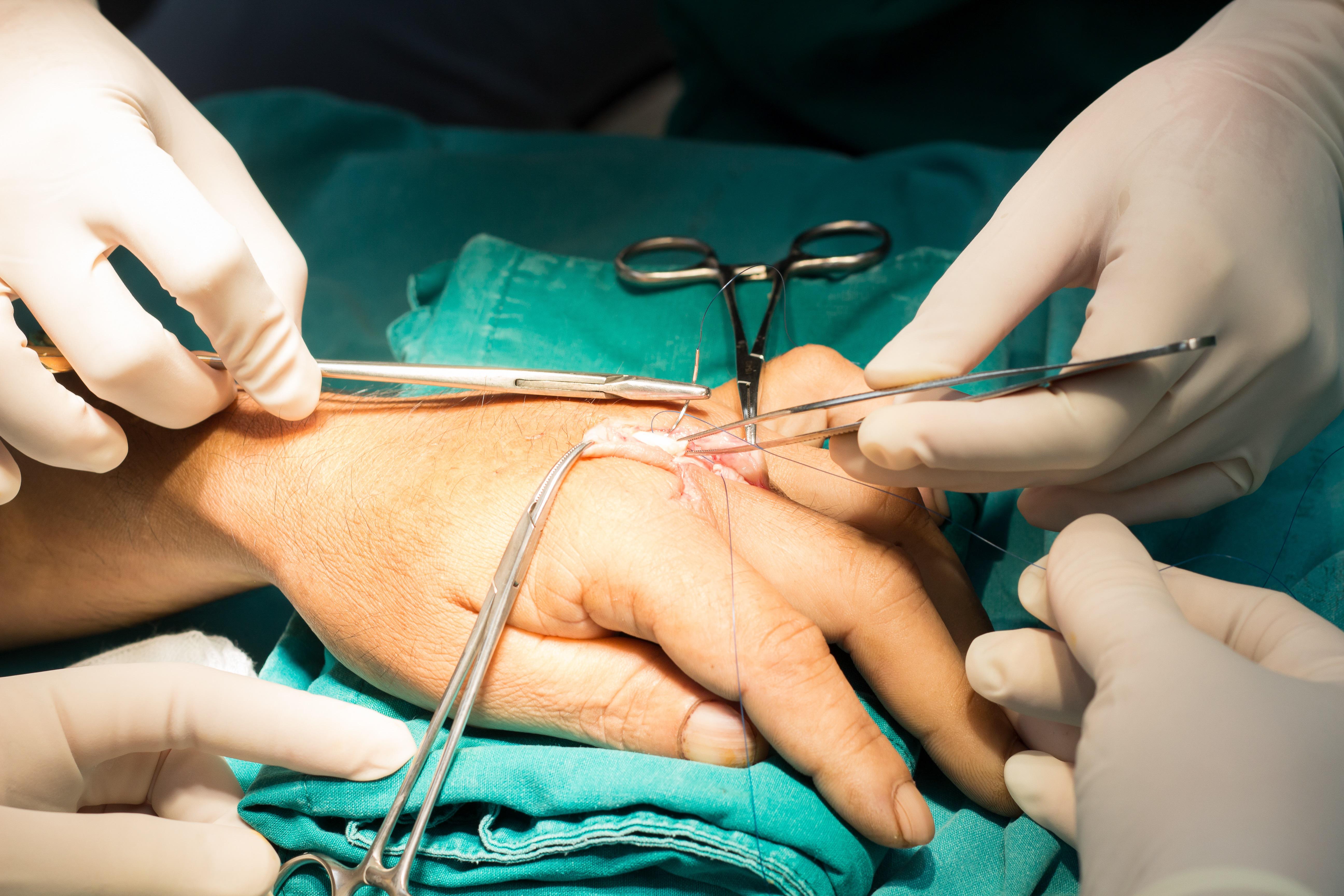Hand Reconstruction

Modern hand surgery is a miracle. The techniques and procedures I am trained in today involve rebuilding bones and joints, re-implanting severed fingers, and restoring function even after the hand has been catastrophically destroyed. The hand is such an intimate part of the body, and to be able to return the use of a hand to someone who has lost it is very moving and satisfying.
Procedures like this emerged around the time of World War II, but in those days it required several different specialists – an orthopedic surgeon, neurosurgeon, vascular surgeon, and finally a plastic surgeon. Later, the idea was conceived to create a super-speciality where one person could do all of those kinds of things.
A Sophisticated Practice
Since then, hand surgery has become a very sophisticated practice. A modern hand surgeon should be prepared to graft skin or transfer fragments of bone, as well as to perform microsurgery to sew together nerve cords with nylon threads thinner than a human hair.
During the time when I was working in Spain, one of the many procedures I would perform was to reimplant amputated fingers. I would establish the bone, inserting pins into the fractures to make the connections; then I would need to reconstruct the arteries, then smaller blood vessels, and then the nerves and tendons. That’s a significant surgical procedure, but if done within the first six hours, the success rate is very high.
One part of this kind of procedure is to reconnect nerves. Nerves come bundled into cables, and to rejoin a severed thread, it’s important that each nerve ending is reattached to its correct partner on the opposite side – get it right, and the nerve will grow together again. If this happens with just 30% of the reattached nerves, we can consider the procedure a success. The nerves will grow back into the muscle at a rate of 1 mm per day – too late, and the muscle will atrophy and no longer work.
The Future of Hand Surgery
Some exciting discoveries are now being made in the use of PRP (platelet-rich plasma) that are likely to shape the future of hand surgery. PRP is nothing new – it’s a blood extract that has been used as a kind of surgical glue within the body since 1972. Recently we have started to use PRP as part of the treatment to repair tendons and ligaments, something that will revolutionize the way we reconstruct the tissues of the body.
Blood platelets enriched with stem cells contain a lot of growth factor. It can already be used to repair bones, and now we’re starting to use it to repair cartilage, which is something that we’ve never been able to do before. These days, all indications show that when you use this form of PRP, it can help to create new cartilage when put in the right place.
Transplants and Prosthetics
In Spain, we’ve now had several hand transplants from one donor to another patient. Hand transplantation is not easy. You have to go through a psychological process and serious counselling before you are considered eligible. The reason is that the hand is such an important part of your body, so if a patient starts to feel the new hands are not their own, they may end up with a sense of horror and want them removed.
Of course, if you cannot save the hand or the patient is not eligible for a transplant, we can fit a prosthesis. There are a range of options, from non-functional cosmetic hands that attach like a glove (they remain fixed to the arm by vacuum suction or by a strap) to biomechanical hands that look real. These have now advanced to the point where they can be controlled with the mind through sensors positioned over the severed nerves that can detect electrical signals from the brain.
Bike Accidents
In our community here in Ho Chi Minh City, serious fractures and orthopedic traumas are rare. Probably the most common injuries I see here are clavicle and ankle bone fractures from bike accidents. The majority of these are breaks in the middle of the bone that leave the ligaments intact, usually managed by fitting a cast to let the bone heal. It’s just a pity that it’s almost impossible to protect against breaks in a bike accident, because when you fall, some part of you is going to land on something hard.
Bone is living tissue, it changes every day. So take care of your living skeleton, and drive safely.
Dr. Carlos Eduardo Tata Rojas - Orthopedics
 We use cookies on this website to enhance your user experience
We use cookies on this website to enhance your user experience